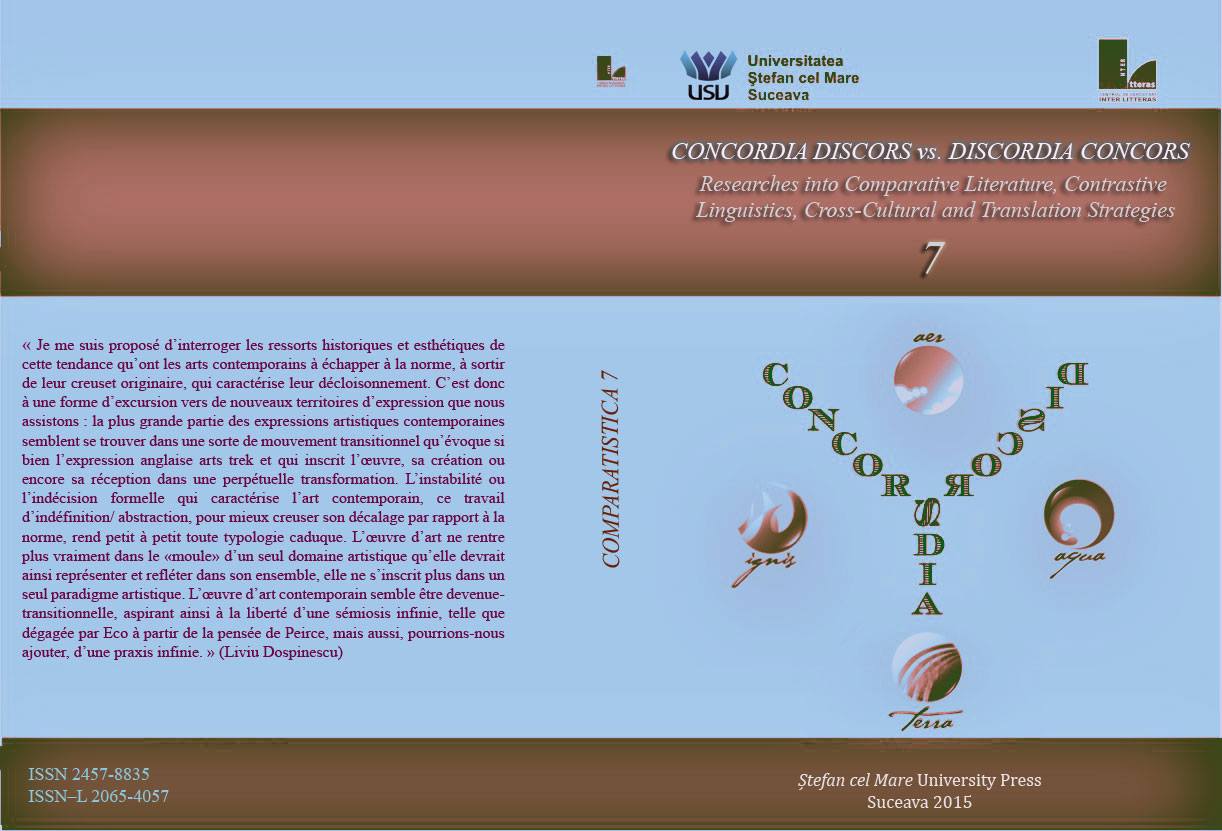Croisements et contre-courants: du dècloisonnement des arts et de leurs transgressions au XXe siècle
Intersections and Countercurrents: on the decompartmentalisation of arts and on their transgressions in the 20th century
Author(s): Liviu DospinescuSubject(s): Cultural Essay
Published by: UNIVERSITATEA »ȘTEFAN CEL MARE« SUCEAVA
Keywords: cubofuturist painting; hypermedial approach; crossdisciplinarity;
Summary/Abstract: Liviu Dospinescu questions the historical and aesthetic roots of contemporary artsř tendency to escape the norm and to come out of their original melting pot, which characterizes their emancipatory openness and their transitional movement. Once it has become transitional, the work of art aspires to an infinite praxis, generating new models in a chain reaction. In this study, the author chooses to address some less explored thematic aspects in four distinct parts. The first one seeks to show how the conjunction of crafts, arts and science open the way for both a series of emancipatory movements and for the generation of new models of creation in the cubofuturist painting. Thus, the example of Marcel Duchampřs Nude Descending a Staircase is a synthesis of conceptual thinking and will serve as a pretext for the research as such. The second part explores the breakaway from the institution of classical ballet effected by Mary Wigmanřs experimental dances, the penchant for a Dionysian expression, more genuinely human, a path equally trodden by Pina Bausch and which would eventually lead to the inauguration of dance-theatre. Thus, the author emphasizes the new expressions of the symptom8 body as reflected by the aesthetics of the ugly and of the fragmentary, which highlights a secret theatre of the human soul. The third part showcases the transartistic character of Jessica Iwanson's dance-theatre show for television Nightbirds. The author describes it through the associations it creates with Edward Hopperřs paintings, transposed to the stage through a hypermedial approach. Finally, the fourth and last part of the study brings to the fore the artistic implications of an intriguing poetical language (related to the autistic disorder) as a form of spectacular transgression of the norms of creation, via the encounter between theatre director Robert Wilson and the poet Christopher Knowles. The example highlights new conjunctions Ŕ of sound poetry, and dramaturgical or scenic architecture Ŕ and forms of emancipation, particularly in the process of creation and in the free-of-all-prejudice reception. Liviu Dospinescuřs essay therefore addresses themes symptomatic of these phenomena of creation which foregrounds the human aspiration to renewal, the emancipation of the artistic universe in general, and the actualization of new artistic worlds of possibilities. The major aim is to emphasize the fact that the dynamics inducing inter- and crossdisciplinary artistic or cultural shifts manifest themselves through the strong desire to break free from the authority and from the limitations of conservative artistic milieus.
- Issue Year: 2015
- Issue No: 7
- Page Range: 7-40
- Page Count: 34
- Language: French

